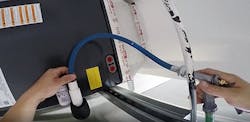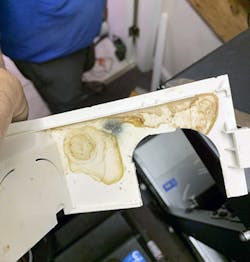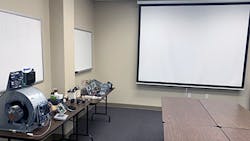Training is not always the easiest of subjects. Good effective training takes the right teacher, with the right knowledge and understanding, presenting the right information to the right people in the right way at the right time.
Right?
R-i-i-i-i-ght!
So, how do we handle an already potentially challenging subject when we are faced with something as trying as Covid-19 and the safety measures that have been put in place because of it? Although these are new waters we are treading, I will attempt to share some of the things that have been helpful to me in presenting training through the past several months. Hopefully, some of this experience will help those out there who are struggling to adapt a training regimen under the current health and safety guidelines.
Web-Based Meetings
With the spread of Covid-19, there seems to have been a large integration of web-based meeting platforms. These platforms are being used for everything from school lessons to fortune 500 business meetings to global leader summits. These platforms are not to be ignored for training purposes as well.
Visual aids are helpful during video conference training. If you do not have a training unit or other test equipment to use as your visual aid, don’t sweat. Power points are nice and provide a clean visual but can leave something to be desired if not built well. Take new pictures for your power point, don’t just use the same old stock images, “freshen it up”. Use animations, and other visual aids added to the power point to help build the image in the trainee’s mind.
Video
Another approach can be the use of videos. These videos can be short, sweet, and to the point. They also can be tied into your power point slides for better visuals.
Some potentially helpful tips when making your videos:
On-site Training
Apprentice ride-along style training used to be the way of the world. A new hire would start, they would ride with a senior guy or several senior guys for a prolonged period. After the trainee had reached a certain level of proficiency, they would be slowly released to the world. This process has become rarer in recent years, with focus spent on auxiliary schooling such as trades schools, high school programs, and collage courses. Ride-alongs still happen but don’t seem as common asNow is the time to fall back to "old reliable," the ride-along. It is not as efficient as reaching multiple people in one setting such as a classroom or online setting, but the quality of interaction can be far superior. Trainees seeing and being present during customer interactions, being with a senior technician to see how they go about troubleshooting or handling a particular situation, and even just the wording they use can be monumentally helpful in developing a trainee.
Small Groups
Break out small groups at a time, 1-3 people. This may take longer to get everyone through the training as you will have to hold many more meetings than just one or two, but the takeaway can be much greater. This is more of a “quality over quantity approach”.Use old equipment being removed during installs for training equipment, and have two or three units that are cleaned between groups. It is hard to do this kind of hands on training when you have 20 people attending; you would need 20 units or multiple people per unit. But when you break into 1-3 person groups, every individual has their own unit, can think for themselves, and learn at their pace. It is also easier to address individual questions in this smaller environment.
Attendees seem to be more apt to ask questions when not in front of a large group also, so the shyness factor may leave.
Training Must Continue
One thing is for certain, training cannot stop just because the world has been faced with a new challenge. This challenge simply provides us with another opportunity to grow and become better equipped to overcome future struggles.
Ian Stiver is director of training for Munn's Sales & Service, Fruitland Park, Fla.
About the Author





